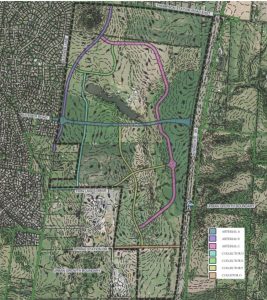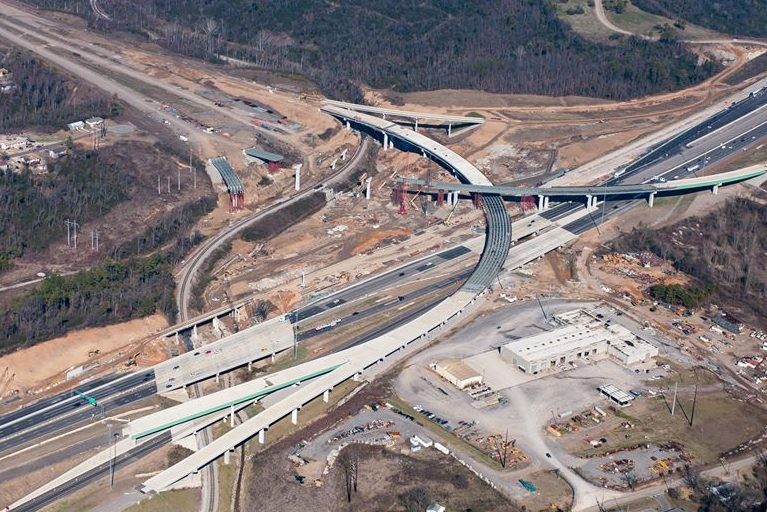With the 2660 Buckner Lane/Alexander Property project on the horizon, a long list of road projects will need attention to handle the new influx of traffic.
 The five-phase, two-decade plan developer SoutheastVenture submitted to the city recently lists short, mid- and long-term road work that must be done to accommodate the increased trips from each phase.
The five-phase, two-decade plan developer SoutheastVenture submitted to the city recently lists short, mid- and long-term road work that must be done to accommodate the increased trips from each phase.
According to a traffic impact study performed by RPM Traffic Consultants, Buckner Lane, Buckner Road, Thompson’s Station Road and numerous intersections will need work. The study also found that an Interstate 65 interchange is necessary to handle a complete build out of the project.
The City of Spring Hill will determine in the planning process how much SoutheastVenture will have to pay toward the improvements. Spring Hill’s newly-adopted Roadway Impact Fee charges by the amount traffic-added.
The project will also create four new roads within itself to connect its buildings, currently named C, D, E and F.
Phase One road projects
Phase one – with a completion horizon of 2021 – will add 11,557 trips per day, the RPM study stated. This first phase is expected to build 252,866 square feet of retail and 28,096 square feet of restaurant space. It will also 159 single-family homes.
Here’s what the means for Buckner Lane:
- realigned eastward between Thompson’s Station Road East and Buckner Road;
- should be widened to at least four lanes between Thompson’s Station Road East and Buckner Road with a center two-way left-turn lane;
- should have bike lanes and sidewalk added;
- should have major work done at intersections with Thompson’s Station Road East, Westchester Lane and Buckner Road.
Phase Two road projects
Phase two – slated for 2027 completion – adds 31,731 daily trips. It will contain 679,296 square feet of retail; 75,141 square feet of restaurant space; 1,238 multi-family homes; and 342 single-family homes.
Here’s what this means for Buckner Lane:
- should be widened between Buckner Road and Duplex Road to four lanes with a center two-way turn lane;
- traffic light added at Westchester Lane, Spring Station Drive and Twin Lakes Drive intersection.
Here’s what this means for Buckner Road:
- widen to four lanes with left-turn lanes at intersections;
- extended east of Buckner Lane to provide access to project’s internal street network.
Phases Three to Five road projects
Phases Three through Five – with a 2037 completion date – will add 68,710 daily trips. It will account for 3.9 million square feet of office space; 1.15 million square feet of retail; 128,186 square feet of restaurant space; 2,152 multi-family homes and 775 single family units.
The report concluded that Phases Three to Five totally depend on the creation of an Interstate 65 interchange at Buckner Road.
“No further development should be permitted beyond Phase Two until an interchange at I-65 is constructed that provides direct access to the property,” the report states.
All of the office space – all after phase two – will not start building out until the interchange is built. This is a process dependent not on the city or developer, but the state and federal governments.
“With the interchange the key point is about demonstrating to the Federal Highway Administration that the interchange is going to have a regional benefit,” Spring Hill Alderman Jonathan Duda said. “And certainly a project like this helps demonstrate [that] access is needed.”
Currently the interchange needs federal funding and approval. It is not part of the Tennessee Department of Transportation’s three-year plan, which updates annually as priority list for funding.
It’s also not on the state’s new project list, which identifies needs not currently under development. But TDOT has endorsed the Buckner interchange plan and forwarded it to the Federal Highway Administration for further review.
“The office component helps our chances but doesn’t assure it,” Spring Hill Mayor Rick Graham said. “They will not build the office buildings if it is not approved, but I like our chances and so do the developers.”
The willingness of the developer to put up funds could be a deciding factor.
“It is not a secret that – with large projects like the interchange – leveraging TDOT and federal funding with private funding helps move them more quickly through the system,” Duda said.
Zach Harmuth covers Thompson’s Station and Spring Hill for the Spring Hill Home Page.



















